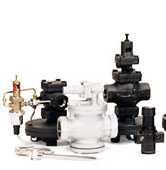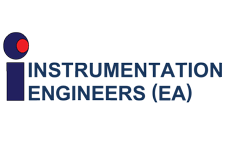 Armstrong pressure-reducing valves (PRVs) and temperature regulators help you manage steam, air and liquid systems safely and efficiently. And they ensure uninterrupted productivity—by maintaining constant pressure or temperature for process control. Steam, liquids and gases usually flow at high pressure to the points of use. At these points, a pressure-reducing valve lowers the pressure for safety and efficiency, and to match the requirements of the application. There are three types of PRVs.
Armstrong pressure-reducing valves (PRVs) and temperature regulators help you manage steam, air and liquid systems safely and efficiently. And they ensure uninterrupted productivity—by maintaining constant pressure or temperature for process control. Steam, liquids and gases usually flow at high pressure to the points of use. At these points, a pressure-reducing valve lowers the pressure for safety and efficiency, and to match the requirements of the application. There are three types of PRVs.
Direct-Acting. The direct-acting type operates with either a flat diaphragm or convoluted bellows. Completely self-contained, it does not need an external sensing line downstream to operate.
Internally Piloted Piston-Operated This type incorporates a pilot and main valve in one unit. The pilot valve has a design similar to the direct-acting valve. The discharge from the pilot valve acts on top of the piston, which opens the main valve.
Externally Piloted In this type, double diaphragms replace the piston operator of the internally piloted design. This increased diaphragm area can open a larger main valve, allowing a greater capacity per line size than the internally piloted valve.
Designed for steam, water and non-corrosive liquid service, Armstrong self-actuated temperature regulators are compact, high-performance units. They operate simply and are therefore suitable for a wide variety of applications. Flexible mounting positions for the sensor, interchangeable capillaries and varied temperature ranges make installation, adjustment and maintenance quick and easy.
Armstrong offers a full line of pressure and temperature controls for steam, air and liquids, as well condensate coolers and drain separators.
 Kenya |
Kenya |  Rwanda |
Rwanda |  Tanzania |
Tanzania |  Uganda
Uganda
